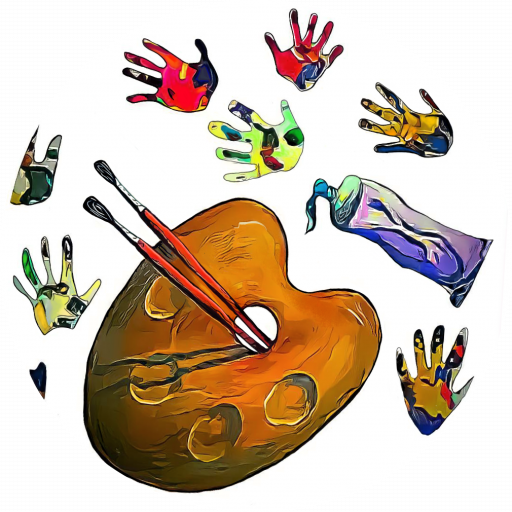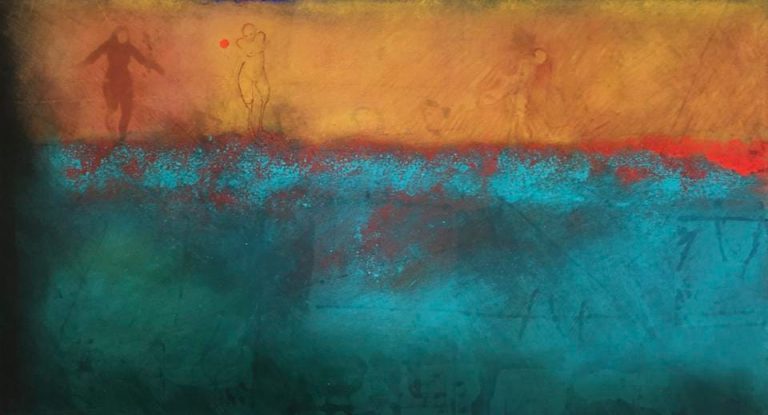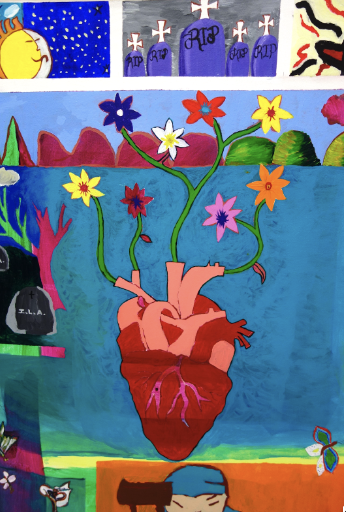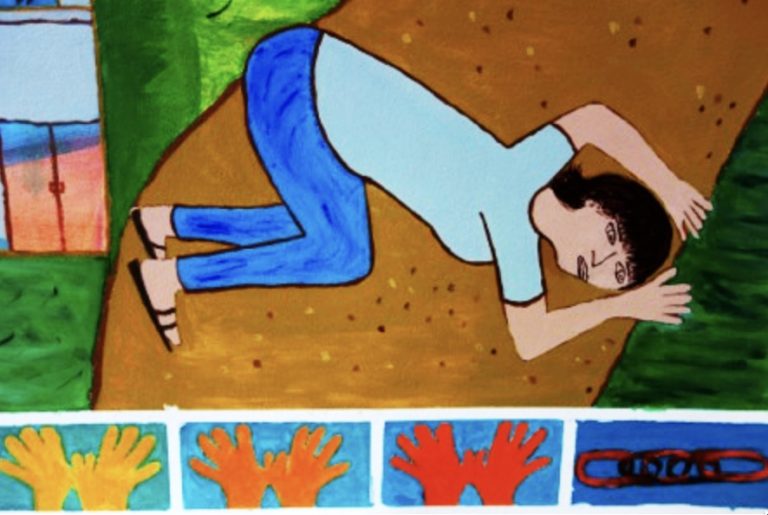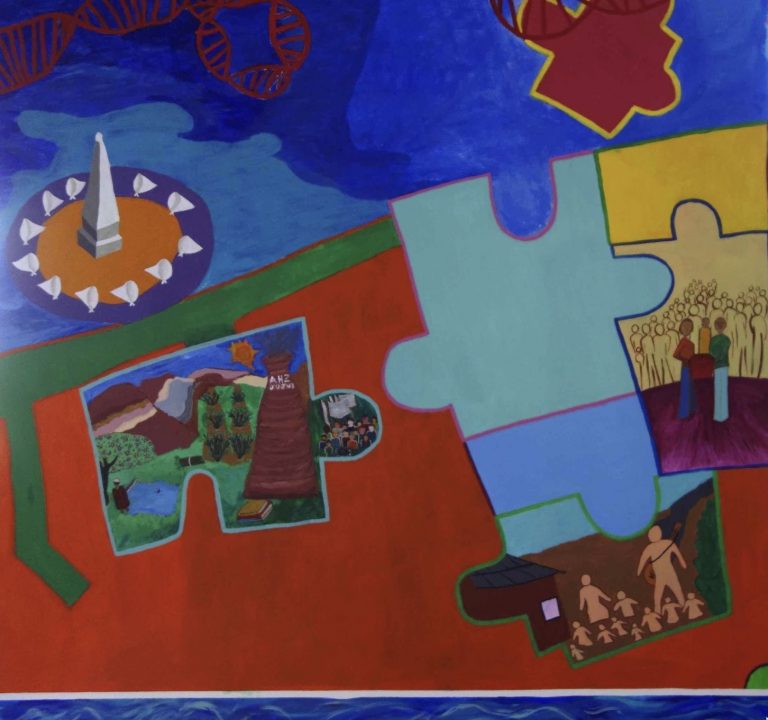Collaborative and Community Based Mural Project
June 1-5, 2016
The Yurok Mural Project was created by 30 to 35 artists/ participants, ages 3 to 68, who congregated at the Klamath Court House, from June 1 to June 5, 2016.
This project emerged from an invitation by Judge Abby Abinanti. Claudia Bernardi was the artist director/ facilitator of this project.
The mural is surrounded with an abstract border that alludes to man and woman, friendship and solidarity. The left side panel; introduces the life of the Yurok tribe, its richness in adjacency of nature. A young Yurok woman carries a basket while approaching a tree where a woodpecker bird announces its presence in the forest.
The Klamath River advances from the left panel; and transits towards the fourth panel filled with fish, eel and salmon while a fisherman and a swimmer enter the border, up river. A traditional family home, sweathouse, is made from fallen redwood trees.
A circle gathers dance and dancers, addressing the public and the ceremonies that are formed around the dance season. The landscape above the horizon line presents the Northern California environment expanding light from the center to the edges of the mural. The Yurok traditional ceremonies include the Deerskin Dance, Jump Dance, Brush Dance, Kick Dance, Flower Dance, Boat Dance that have drawn Yurok people and neighboring Tribes together for renewal, healing and prayer.
An eagle surrounded by descending color arrows is the anchor and central image of the mural, adjacent to a woman holding fire that will never cease to burn. A bear claw takes us to a young woman, dressed in dance regalia, who harmed herself. The girl talks to her grandfather who has recently died. He has come back form death to advise her against further harm. The girl listens while the drops of her blood falls into the river changing the color of waters with the fact of her pain.
The far right panel addresses loss, pain and suicide. Four empty chairs stand next to an AA meeting sign. The expectation is that suicide will diminish among the Yurok youth and that drugs and alcohol will be eradicated form the life of the community.
The Yurok people carried trades and social relations through this region and beyond using a monetary system based on the use of dentalium shell which appears at the very edge of the right panel creating a contra point of hope to the sadness of the young self inflicted deaths.
Yurok Artists
The creation of the Yurok Mural was a remarkable shared experience of truth, pain and beauty. Young boys and girls, ages 11 to 15 were courageous enough to address the suffering of the Yurok community and the rampant effect of drugs and alcohol, which is a legacy of the wrongness with which indigenous people were treated by white settlers. The pain has traveled from generation to generation.
The dance of mural painting
http://www.triplicate.com/http://www.triplicate.com/News/Local-News/The-dance-of-mural-painting
This project is the result of many people’s efforts, shared visions and collaborative work.
I would like to thank dearly to:
Abby Abinanti, Kimber Riddle, Libby Maynard and Ink People, Rochelle Brown, Vicky Bates, Kim Mamaradlo and each and all the participating artists of the Yurok Mural.
Thank you!!!! Claudia Bernardi
